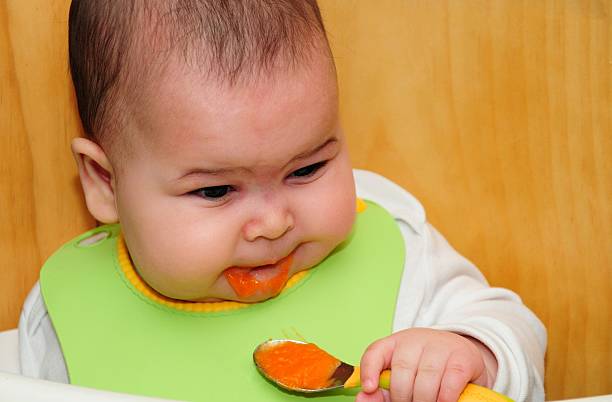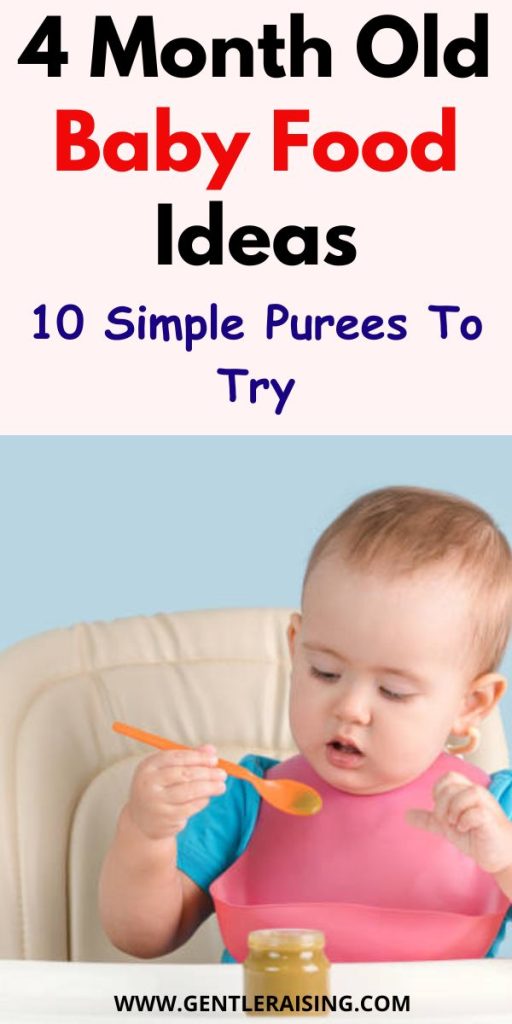Welcome to the Messy (but Magical) World of Baby Food
You blinked, and now you’ve got a four-month-old. Wild, right? Just yesterday, they were curled up like a sleepy burrito,o and now they’re holding their head up and giving your sandwich the side-eye. That look? That’s interesting. Curiosity. Maybe even hunger?
Now, before you run off to whip up a baby charcuterie board, let’s pause for a sec. Is it actually time to start solids? That’s a fair question, and here’s the honest answer: maybe. Some babies are ready at four months. Others need a little more time.
Pediatricians often recommend starting solids around six monthsbut if your little one is showing signs of readiness (we’ll get to those), it might be okay to introduce small, smooth-textured foods earlier with your paediatrician’s green light, of course.
Let’s break down the top 10 food ideas for your budding foodie, and how to serve them in a way that keeps them full, happy, and fingers crossed, not wearing more food than they eat.
1. Is 4 Months Too Early?
Let’s talk about that elephant in the high chair. Is your baby even ready?
Here’s what the experts generally agree on:
- Signs your baby may be ready: good head control, sitting up with support, showing interest when you eat, and (key!) losing that tongue-thrust reflex that pushes food out.
- What doctors usually say: Exclusive breastfeeding or formula feeding until 6 months is the gold standard. That said, some babies show readiness around 4–5 months, and a cautious introduction can begin with single-ingredient purées.
Bottom line? Talk to your paediatrician first. Every baby’s timeline is a little different.
2. Stick to One Food at a Time
This one’s less a food idea and more of a survival strategy. Offering just one new food every 3–4 days helps you spot allergies, sensitivities, o or well, anything that doesn’t “sit right” with your baby’s belly.
Plus, it simplifies things. You’re not juggling combos like MasterChef just yet. Keep it mellow.
3. Rice Cereal. The OG Starter
Yes, it’s still around, and still doing its job. Iron-fortified rice cereal is bland (aka safe), easy to mix, and often well-tolerated.
Here’s how to make it not feel like paste:
- Use warm breastmilk or formula to thin it out
- Make it very runny at first, then gradually thicken the s the baby adjusts
- Serve warm, not hot. Test it on your wrist first
Pro tip: Avoid pre-flavoured versions. Just plain rice cereal, please.
4. Banana Mash (AKA Nature’s Pudding)
Bananas are like the soft jazz of baby food: smooth, familiar, and surprisingly comforting.
They’re naturally sweet, easy to mash with a fork, and often the first fruit babies fall in love with.
Just be mindful: too much banana can cause a little constipation. If your baby’s already struggling in that department, rotate with something a bit looser (hello, pears).
5. Avocado. The Millennial Baby Must-Have
Creamy. Nutty. Full of healthy fats. Avocados are like edible baby lotion for the brain.
Scoop, mash, maybe add a little breastmilk for a smoother texture, done.
And you know what? Babies look hilarious with avocado moustaches. Get your camera ready.
6. Sweet Potato Mash. A Cozy First Favorite
This one’s basically a baby comfort food. Sweet potatoes are full of beta-carotene, soft when steamed, and have a mellow sweetness that makes them super appealing to new eaters.
You can bake, steam, or boil. Just make sure you puree or mash until smooth. Add a dash of breastmilk if it’s too thick.
7. Pear Puree, Gentle on Tiny Tummies
Here’s a fun fact: when babies are backed up, doctors often suggest pears, prunes, or peas. Pears are gentle, subtly sweet, and high in fibre.
They also cook quickly and blend like a dream. Steam them till fork-tender, then puree with water or formula.
Compared to apples, pears tend to be softer and less acidic, making them an easier start.
8. Veggie Time: Carrots, Pumpkin & Peas
Let’s bring in the veggies. But gently.
Start with steamed carrots or pumpkin, both are naturally sweet and soft. Then try peas (they’re tiny but mighty). Just blend them super smooth, and strain if needed.
Texture tip: Veggies tend to be grainier than fruits. Add water, formula, or breastmilk until silky.
9. Apple Sauce. The Classic Comfort
Applesauce isn’t just for toddlers. For 4-month-olds, just peel, chop, and simmer apples until they melt in your hand. Then blend like your life depends on it.
Want to get fancy later? Add a pinch of cinnamon around month 6–7. But for now, keep it simple.
Also: serve it warm. Not microwave-hot, just warm enough to feel cosy.
10. Oatmeal Purée. A Hearty Hug in a Bowl
Oats are underrated. They’re soft, wholesome, and satisfying.
Make your own baby oatmeal by:
- Grinding rolled oats in a blender
- Cooking with water or milk till mushy
- Pureeing till smooth
You can mix in mashed banana or pear for extra flavour and texture. Don’t be surprised if your baby makes a funny face. Oats are a bit thicker than fruits.
Foods to Wait On
Let’s put these on the shelf for now:
- Honey – Risk of botulism (not safe until after 1 year)
- Cow’s milk – Can irritate babies’ gut and lacks the iron they need
- Salt & Sugar – No need; their taste buds are still under construction
- Citrus fruits – Can be too acidic for tiny tummies
Tools You’ll Want (Trust Me)
- A good blender or hand mixer
- Steamer basket (total game-changer)
- Small baby spoons (with soft tips)
- Silicone ice cube trays for freezing purees
- Bibs… like, lots of bibs
Also, wet wipes. Don’t even think twice.
In the End, Keep It Messy & Joyful
Feeding your baby solids is a big moment. It’s squishy. It’s funny. It’s sometimes frustrating (and often messy). But mostly? It’s beautiful.
Every bite is a step toward independence, and let’s be real, toward sharing your fries someday.
Go slow. Take pics. Let them play with their food. And above all, trust your instincts.
You’ve got this.

